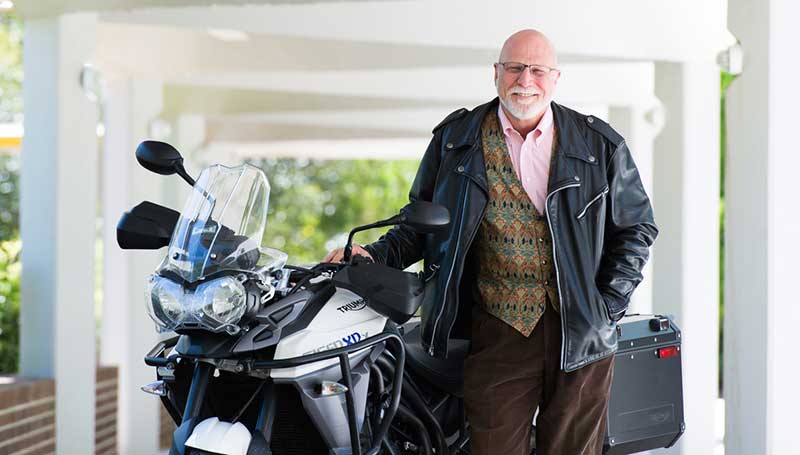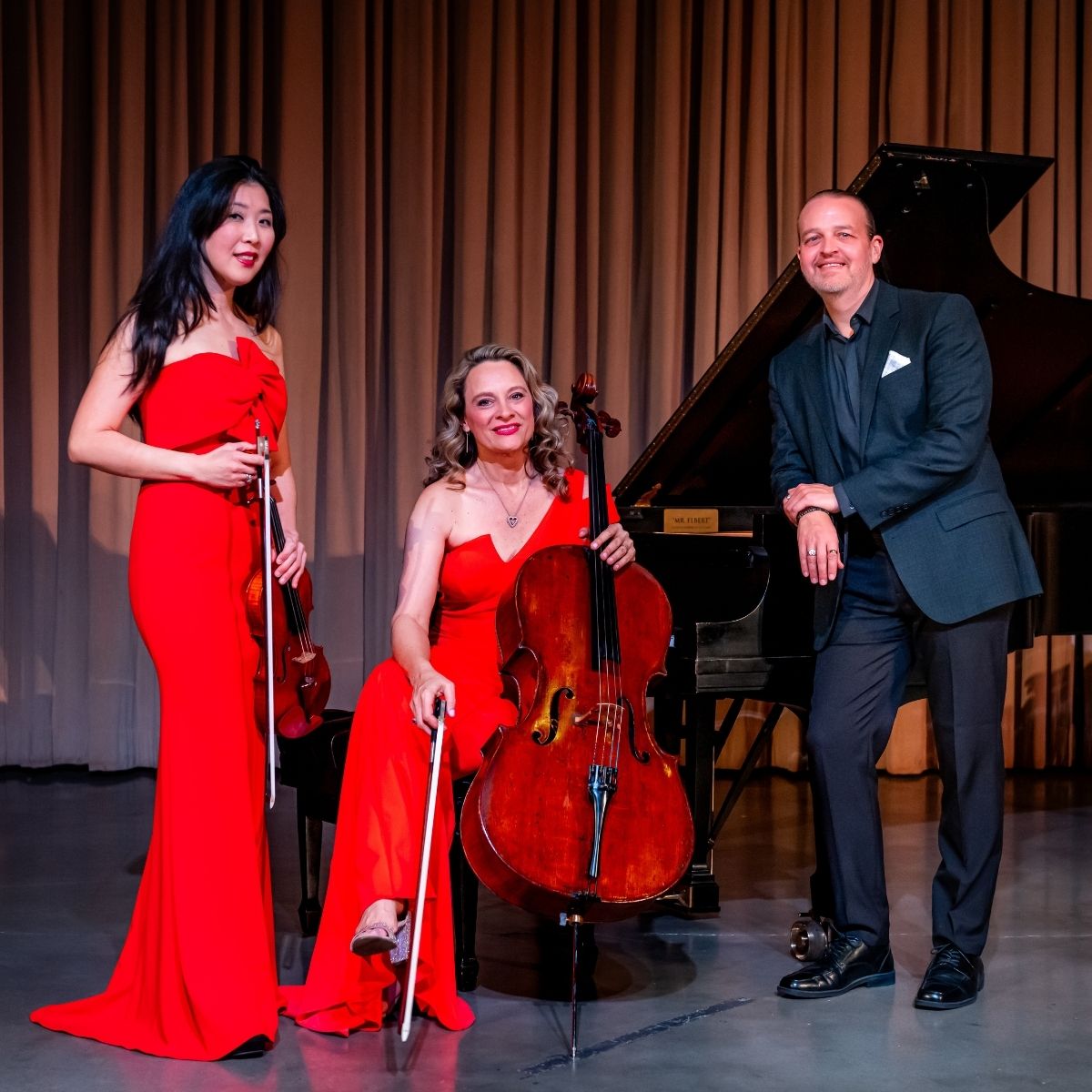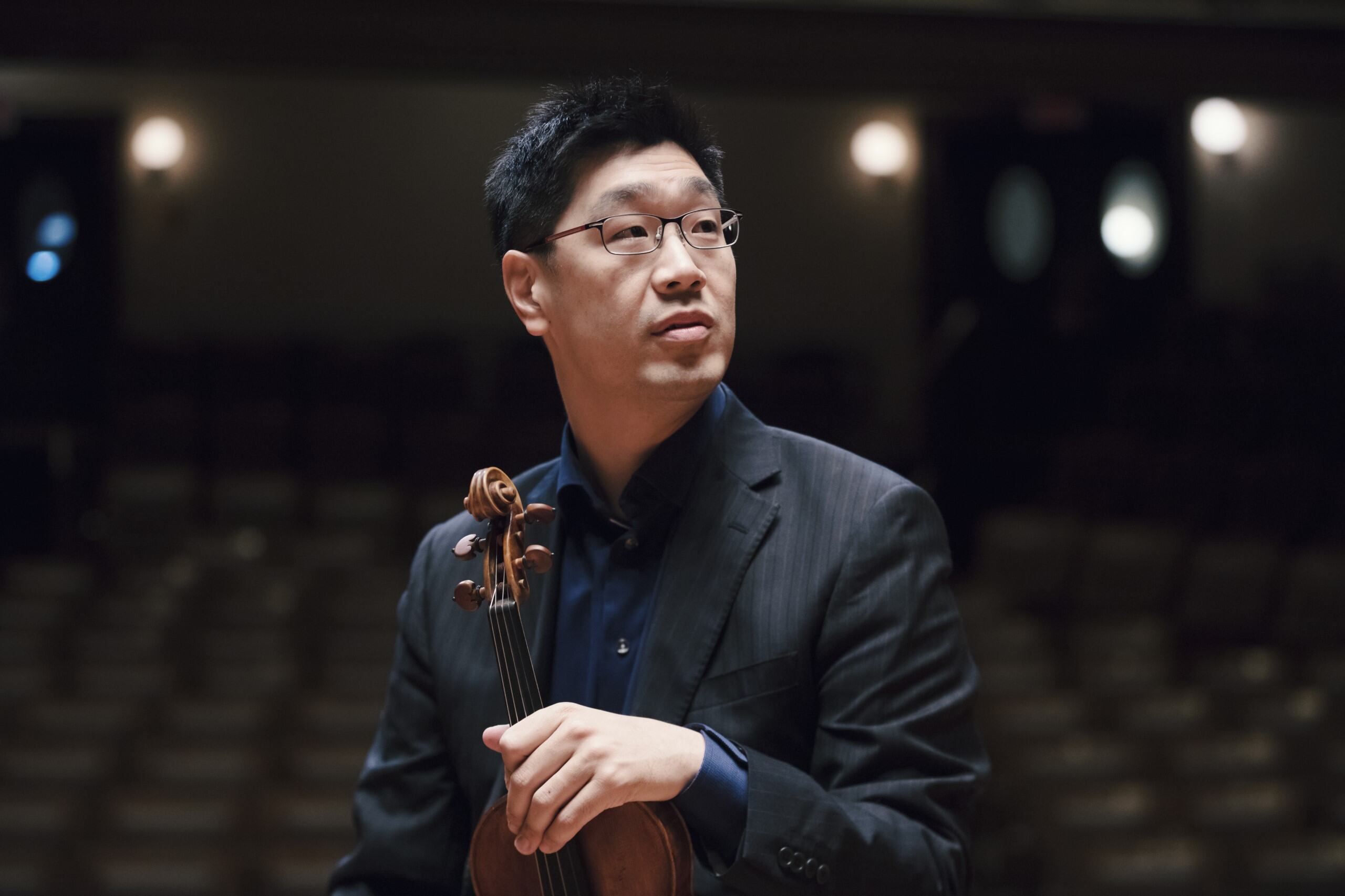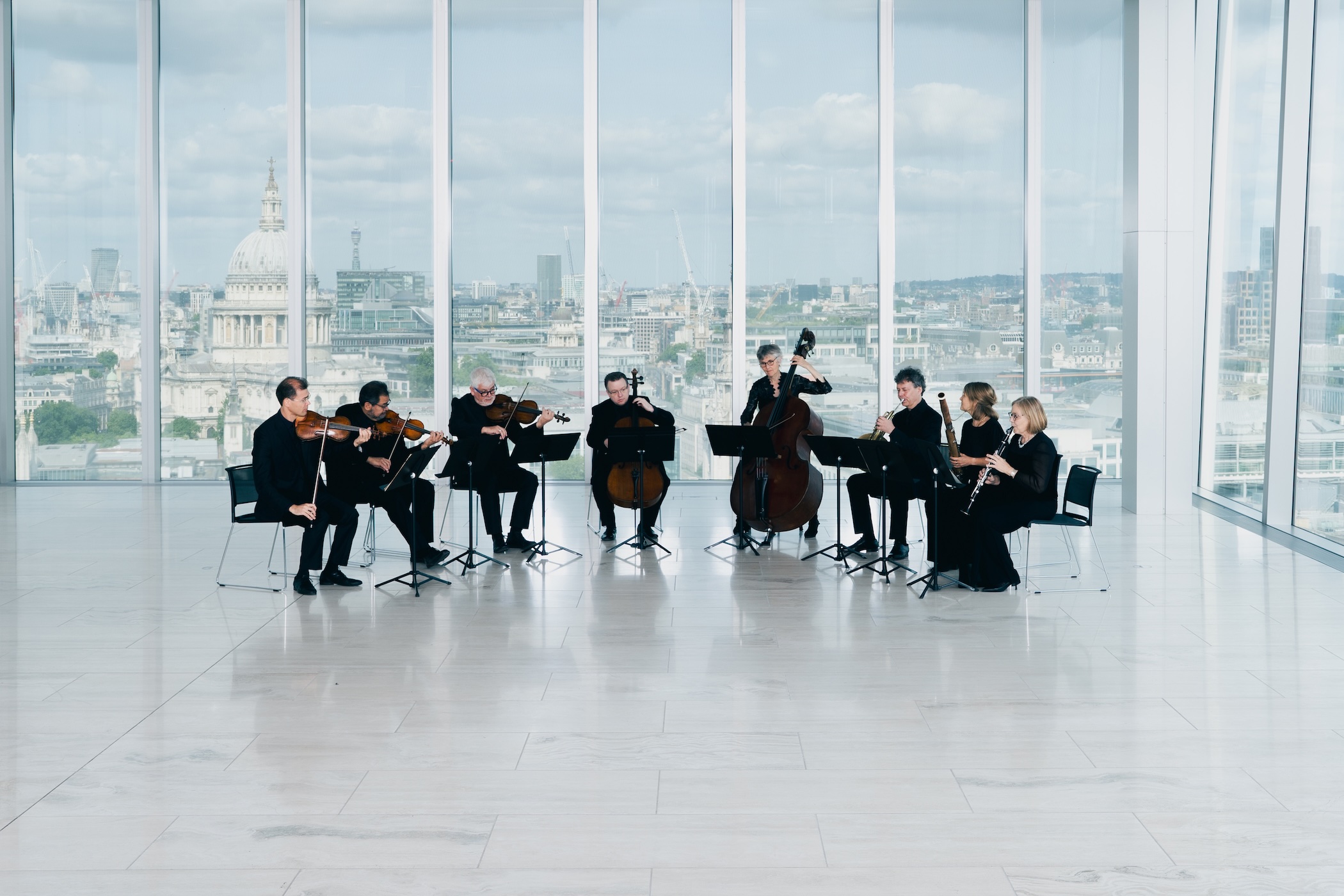2018 NAfME Senior Researcher Award Acceptance Address – Dr. Harry Price
KENNESAW, Ga. | Aug 1, 2018

2018 Senior Researcher Award Acceptance Address: Open-Mindedness for ALL Available Research Data
Dr. Harry Price
Professor of Music and Music Education
Kennesaw State University School of Music
Beethoven is credited with saying “Music is a higher revelation than all wisdom and philosophy.” With that, we could stop right now, but that would make this talk a bit too short.
It is important to begin by recognizing some important people. I appreciate the National Executive Board of NAfME, the Music Education Research Council and its Executive Committee, as well as all the members of the Society for Research in Music Education for supporting my nomination. I especially want to thank my skilled colleague and friend Deborah Confredo. She wrote a remarkable nomination letter for this award. It is an honor for me to be named among this award’s previous recipients.
As an undergraduate in the early 1970s, I assisted a doctoral student, Michael Wagner. My job was as a “technology” aide to him. At that time, our job was mostly to make sure that the stereos were hooked up and the power cords were plugged in. Yes, this was the time of phonograph players, a little machine that was about this size that turned around and around, on which you placed a vinyl disk, and a needle sat on it to transfer the waveforms through an amplifier to speakers. We also made sure that the equipment was turned on, a problem many times. Mike helped me to begin thinking about music education and how it does or does not function. Along with this work, I also helped some other doctoral students with technology in their research.
In my master’s work, Clifford Madsen directed the thesis. Later, after teaching a bit, I was fortunate to work with Cornelia Yarbrough on my doctorate and beyond; strangely, I assisted her with some technology when she worked on her dissertation. Cornelia taught me a great deal about education, research, and life in general. She is responsible for so many good things that have happened to me. What would we do without our wonderful mentors? As for the not-so-successful things that have occurred in my career, those are due to my continued stubbornness.
My colleagues over the years have been so helpful. At Virginia Tech, I was able to further develop my research skills—even as the marching band director. By the way, Jere Humphreys (2006) stated that the ancient Romans fielded marching bands, so I guess I was doing historical research when I was there. Of course, there were the many positive years at the University of Alabama, which was incredibly supportive of my research. Finally, there were many wonderful undergraduate and graduate students in my almost 40 years of teaching. How rewarding it has been for the students and me to share working on papers together! Interestingly, I worked quite a while ago with one of my students, Evelyn K. Orman, and now am assisting her fine research on virtual reality, efforts that she has pursued for more than 18 years (Orman, Whitaker, Price, & Confredo, 2017). In this case, the teacher can also become the student.
Now, I would like to share with you some data that come from an examination of all the citations in Journal of Research in Music Education, from its beginning to 2015. Before going on, however, we need to remember that there are many researchers today who are making wonderful contributions and providing important professional service and excellent teaching.
The most referenced author in JRME’s history—okay, prepare yourself for this surprise—is Clifford Madsen. His works have been cited more than 670 times going back to 1966. He is the most referenced individual in JRME, and he continues to be an important contributor. After him, there is John Geringer, with more than 390 citations. He also continues working with colleagues and pursuing his joy: research. Finally, the third most cited scholar in our field—and my mentor—is Cornelia Yarbrough, with more than 275 citations (Price & Hancock, 2017). What wonderful examples these three people are for us, as are many of you in this room! Obviously, these data are an indication of people pursuing knowledge; as Campbell stated, “following your bliss” (Campbell & Moyers, 1988).
We need to continue growing and changing over time; if not, then we need to stop right now and refocus our perspectives or even our direction. This may be what Pat Flowers (2012) referred to when she said, “those who have engaged in doing research again and again are often humble in their knowledge and generous in mentoring others” (p. 247). Over time, I have come to realize how little I know that is research-based; however, in all honesty, I was an expert on so many things when I was younger!
Sadly, the need for more research has not prevented people from going forward with facts that came from who knows where. So for those of you who have solutions but no research data to support them, please take some time to consider this and what it may say about the lack of data or your ideas. I am going to state this one more time: If you have solutions but no research data to support them, please take the occasion to consider this and what it may say about the lack of data or your unsupported conclusion.
Some of the previous recipients of this award have said that they did not want to predict the future of our research world, and I agree, having had many long-range professional plans myself, none of which have ever been accurate. For example, I got my first Macintosh computer in 1984; it was the Fat Mac (512K memory). My prediction then was that there would be no difference among desktop computers in 5 years. Here we are almost 35 years later, and we still have not gotten to that point. So, I predict that in 5 more years … oh, never mind!
I could talk about some of my own research in the areas of rehearsal atmosphere, feedback, pacing, conductor demeanor, conductor effect on performance assessment, rehearsal structure, verbal communication, content, aural modeling, conceptual teach- ing; or nonverbal issues, such as facial expression, eye contact, and gesture; or music appreciation, music preferences, content analyses; or examining researchers’ approaches; or virtual reality work; but, I am not addressing any of these today.
Instead, let us consider the basic concept of questioning ideas. This approach is over 1,000 years old (Lorch, 2017). It was mentioned recently in the television show Cosmos, originally hosted in 1980 by Carl Sagan and more recently by Neil deGrasse Tyson (2014). The first thing we do is to consider conceptions that we believe might be real. Then, we need to examine these ideas with experiments and observations. Based on the results, we build on the ideas that are supported and reject the ones that fail. We develop concepts, create assessments to view whether they work or not, and then build on this information toward the attainment of knowledge-based results.
The goal is to follow the evidence, not to build on what we believe. In the end, the key to all of this is to question everything, even if it is an idea that makes complete sense but has no data available to support it. So, after we produce philosophical research about a concept, we test it. With those results, we build on ideas that pass the test and reject the ones that fail. We question everything, and it leads us to the next experiment. With this approach, we continue following the results wherever they lead.
Asking unbiased questions might be the most consequential issue of our work. Always do this! Do not just accept things because they seem logical, because someone said so in a speech, because we have read it somewhere, or because it has always been that way. If you accept this inquiry approach, there are five steps to follow:
- Test the idea.
- Build on the concepts that are supported.
- Reject the ones that fail.
- Continue following the evidence, wherever it leads.
- Finally, this will lead us to a clarified idea and the next research project.
Some unsupported results from our work can be a challenge. It is possible that something we strongly believe in, even if it has been accepted for many years, may not be accurate in the context of current and more complete knowledge. Is it the truth? Well, for now it is, but that may also change in the future. It is a certainty for the moment.
Whether one’s research interests are philosophical, qualitative, mixed methods, quantitative, or any other approaches, the key is to be open-minded. To employ a qualitative or quantitative approach, there are specific procedures that need to be pursued. Everyone has a bias—we are human. We cannot, however, allow those predispositions to guide how we do our work. For instance, when interviewing people, one can structure the process for the answer that is wanted since the correct response is already known; or one can structure the questions for an unbiased answer that allows people to provide a true and open reply. Using a more quantitative example, one can have people look at examples that will yield the correct answer wanted, or one can provide examples that are open enough so that individuals can reply in any direction. When carried out appropriately, one may well come to the end of the research with findings that indicate an initial perspective might have been correct or incorrect. Our goal is to understand that there are several possible results, and we must have the background to see them. It does not matter if we look at situations behaviorally, constructively, ecologically, cognitively, situationally, or most anyway. Our personal biases need to be avoided. In fact, if we are open to any possible response, this might be the strongest way to examine anything. Every approach lends an understanding to what we are investigating.
There are differences in how we move forward. When operating in a qualitative mode, the involvement needs to be for an extensive period. This allows time to understand what you are looking at and its meaning to the people involved. In fact, as many of you know, normally we check with the people or group we are working with regarding our understanding of what we think we saw. Saying that “we observed something five times or spoke to five different people for an hour, and here is what we know” is not research of any kind. It might be a good thing for a newspaper or a public journal article. We can go from many results to theories or have theories that then can be examined. Regardless of the direction of the research, we must be open to any response, not just what we want to hear to reinforce our own belief. As I stated previously, in the end, all of us must be willing to admit that our perspectives or anticipated results may have been incorrect. Frankly, I find this approach is a huge challenge, but I continue to work on it. It is very personal, even though it is professional work, because these concepts may be things we have believed for quite a long period.
Those of us who have been reviewers may well have seen papers that from beginning to end were headed to a specific result, which of course the authors found. The question would then be, could we have gotten different results from the research done in a different way? We must examine everything openly, with a willingness to change with new data. As the host of the new Cosmos program said, “The good thing about science is that it’s true whether or not you believe it” (Tepper, 2014). That is not always easy!
Please do not make a transfer to our country’s politics today! However, we have a diversity of so many different publication sources. This variety is a good thing, although it also can be bad news depending on how we handle it. My concern is that in music education, we seem to be getting isolated. We may even present a study with almost all reference materials coming from one or two journals (Price & Hancock, 2017). Now, depending on what your work is, there might be a best source or two, but there are so many possibilities in and outside of music that may also be helpful. Until we look further for information, we may well be missing important findings. In my view, it is unfortunate that sometimes music educators and music psychologists do not know of or cite the research by other scholars. Honestly, I think music educators are a bit more open, but we all still need to expand our perspectives. For instance, there is one conference where music educators and music psychologists attend. Sadly, these two groups barely interact, except for some of the sessions they all attend. How silly!
We need to try to read more broadly, go to a wider array of conferences, and expand the sources where we submit our works for presentation or publication. Breadth, for us, leads to greater knowledge, additional interests, and growth in many directions. I have no magic formula, but I can hope that, with time, the receptivity of colleagues in psychology, education, and music will increase, as will our knowledge. Why not?
In my undergraduate days, our professor had us each read a research study and summarize its “essential point”; this task was also done with a graduate class. Even though as undergraduates we were not trained in research or statistical skills, the resultant brief summaries were excellent. With no research background, we were able to give correct and important summative points about the articles. Interestingly, these summaries were similar to those the graduate students produced. However, there was one difference: The graduates were more likely to turn in typewritten summaries versus handwritten reports.
It is interesting that even today we have colleagues who say, “Research is too complicated for our undergraduates.” I would argue that there is no reason not to discuss research in many of our undergraduate classes, whether about elementary music, choral or instrumental techniques, class management, or conducting work. The key is that our undergraduates will start to understand that there is research they can learn from immediately. Those among you who are doing this, please encourage our wonderful colleagues to include findings in their undergraduate teaching. We can do this immediately.
When I worked on my theses a long, long time ago, it was hand-typed. However, the analysis could be done either by hand or on a mainframe computer. Given that some of you have not ever dealt with this, I’ll give you an overview. You had to put everything on cards that were then read by the machine. Sometime later, you could go and get your analysis or find out that there were errors, fix them and resubmit, fix them and resubmit, fix them and resubmit until finally it was correct. A little while later, the dissertation could be typed into the computer, but you still needed cards to set up formatting, check spelling or whatever you needed done to the text, in addition to submitting- ting the cards for data and their analyses. The blue text that came out of the machine was even accepted for the final dissertation document. When everything was going on, I was also participating in research efforts with my major professor. In addition to all we learn from each other, having to get far into the data to understand our analyses and how the items function is tremendously instructive.
I wonder if we have lost something by not having to do any qualitative or quantitative analysis by hand anywhere in our careers. There is a depth of understanding initially that, I think, comes from having to do the mathematics or analysis work, even if it is simple statistical analysis or labeling or seeing how data fit and affect the analyses. What happens if the means were different, or the shape of the data changed, or the standard deviation varied, or the probability level changed? Why do we pick p = .05? Why not .04 or .07? Are we really doing this because we have 5 or 10 fingers?
Katherine Johnson, whose story was featured in the movie Hidden Figures, was recently interviewed. Johnson was one of the three African American women pioneer mathematicians who worked for NASA in the 1960s. She said, “First you learn how to work the problem, and then you can use the computer” (Lindsey, 2018). It is unbelievable the things we can do today, or have done for us, compared to 25 or even 5 years ago. But the question is, do we know the meaning of our analysis and why we have specific results or how we get the effect size and what it says? Regardless of how we get there, it is important to understand the basic factors in these analyses, not just definitions we get from textbooks or other situations that resulted in our findings. Yes, computers can do most of it, but what do these results really mean, and how did we get here?
The position of music education research has sometimes been treated well and at other times not, but we need to continue being strong advocates for our field. Things have not changed since before I was involved forever ago. As an example, among NAfME’s online information for this meeting, they listed five “thought-provoking sessions in this year’s conference.” Among those big things there was not one mention of research—in our 2018 Music Research and Teacher Education National Conference. In fairness, maybe one of the five, “Mapping the Route to Publication: Advice from NAfME Journal Editors,” does relate to research, since a couple of the included editors are from our research-sourced journals (NAfME, 2018).
Finally, as researchers, we know the value of our work and its relation to aspects of music education. Indeed, previously JRME and the other NAfME research journals had a page, written by Ella Wilcox, in Music Educators Journal that described some clear teaching possibilities from some of these journals’ articles. We do not know how well this section functioned, but work like that and other methods of making connections seem like an excellent idea. Of course, this was also the initial goal of Update: Applications of Research in Music Education. Indeed, the promotion of our discipline has happened in many ways, and we need to continue pursuing this activity.
We now have the plan of combining our meeting with NAfME’s K–12 conferences. Interestingly, this is a return to a previous structure, for those among you who are not aware. It could be positive, if our research community, conference efforts, and successes are not hindered. Would it not be remarkable to be able to hear more music at a music educators conference? How about interacting with all our colleagues, including those who teach in pre-K through 12th grade? We could share the many things we have learned. This could also, more directly, provide the opportunity to learn and hear what our colleagues are focused on and what they would like to know more about. Just like all functional collaborations, everyone can learn, grow, and move forward if it is well organized and people do not try to get political or run the meetings in other directions for other purposes. Think of the chances for interactions that we could all have! The trick is to move with great care and thought about how everyone could benefit.
When I was more involved with MENC, and now NAfME, promoting our work was (and still is) a lifelong feature that resulted in both good and bad reactions over the years. This, of course, is a personal choice, and the problems created were real, but so were the rewards; indeed, receiving the Senior Researcher Award is the most positive professional experience that I could ever have imagined. We need to promote research and its findings, in our field and other areas, to help people understand the importance of what we do, the foci, the values, and the relevancy.
Again, I need to thank the previous recipients of this award. Several of them have said that we do research because we enjoy it (Geringer, 2000; Leblanc, 1992; Reimer, 2008; Sims, 2016). The pleasure that we get out of doing research is the single largest internal variable functioning for us (Leblanc & McCrary, 1990). Many of us are intellectually curious and want to further understand situations. The style or type of research is not the key! There is no point in talking about the correct theoretical, applied, or developing ideas, or quantitative or qualitative approaches, or whatever the nature of the work. Regardless of what we believe in, the key is the pleasure that the research approach gives us and the need for being open to many ideas. All research provides learning, understanding, and enlightenment. As one of my mentors, Cornella Yarbrough (personal communication, March 3, 2018), said, “Research is my performance medium.” How we go about it is our own personal choice.
All of you here today are friends, colleagues, or interested individuals who care about music education and research. It does not matter where we work—all of us were or are teachers in general music; elementary, middle, or high school orchestras; band or choir directors; or teachers of music theory or appreciation. Everything in music education is consequential. You care about music and helping people learn about it, and that makes you special. My respect for you is immeasurable. There are so many other things in life that many of you could pursue, but instead, you are involved with teaching and learning music. Understanding how we can pursue this better through a knowledge of research findings is our goal. In this regard, I both thank you and admire you more than you can ever know.
I will end with the measure conductor Jeremy Zander uses to know whether people are focused and enjoying themselves: It is by the number of folks whose eyes are shining. I hope some of you smiled or lit up at some point in this talk. We are all so fortunate for the music we love and what we get to do!
Related Posts

Bailey School of Music Rings in the Holiday Season with Two Festive Concerts

Summit Piano Trio to Make Weill Recital Hall at Carnegie Hall Debut

World-Renowned Violinist Soovin Kim to Perform at Kennesaw State University

World-Renowned Chamber Ensemble Brings Global Stage to KSU Students and Community







